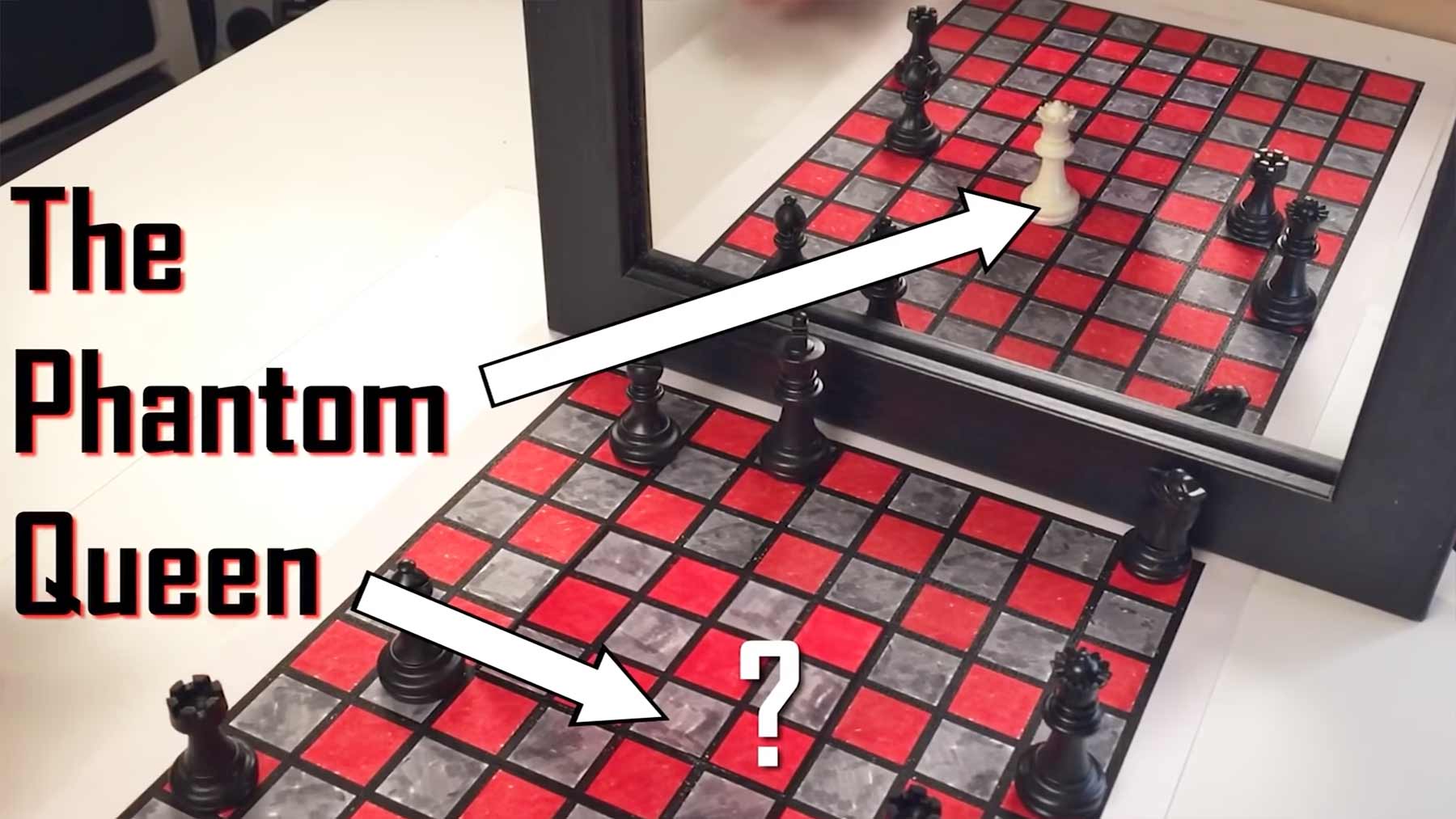
Von den Machern von „Die besten optischen Illusionen des Jahres 2020“… Also, die optischen Täuschungen selbst wurden von anderen Menschen erdacht und umgesetzt, aber erneut hat die „Neural Correlate Society“ die besten visuellen Kniffe des Jahres gekürt. Hier die zwei offiziellen Preisträger von 2021, wobei ich dieses Jahr ehrlich gesagt etwas enttäuscht bin. Für mich hat da Platz 3 eigentlich sogar gewonnen…
Optische Illusion des Jahres 2021: 1. Platz
Matt Pritchard aus Großbritannien hat mit „The Phantom Queen“ den ersten Platz belegt. Für mich eher ein kleiner Zaubertrick, denn eine wirkliche optische Täuschung, aber klar, der Effekt funktioniert und der Aufbau ist durchaus tricky.
„Author description: The main illusion in this video shows a chess board and its reflection in a mirror. However, there’s a phantom White Queen piece that only appears as a reflection, leaving a mysterious empty square in the foreground. The illusion is achieved by creating a camouflaged invisibility cloak that shields the Queen from one viewing angle. The shape and pattern of this shield also disguise its presence when viewed from a second angle that comes from the mirror’s reflection. The video also shows other applications of this anamorphic camouflage to create a remarkable magical appearance and an invisible cube.“
Optische Illusion des Jahres 2021: 2. Platz
Platz 2 wurde vom US-Amerikaner Michael A. Cohen erlangt. Dazu sage ich erstmal nichts.
Hier gibt leider bereits der Name „The Changing Room Illusion“ sowie die Beschreibung sehr viel vorweg. Aber auch wenn ich einige der Fades direkt beim ersten Sehen bemerkt hatte, so war ich dann doch überrascht, dass so ziemlich ALLES vertauscht worden ist. Von daher hat es schon irgendwo funktioniert, würde ich meinen.
„Author description: The Changing Room Illusion is an example of ‚graduate change blindness,‘ a phenomenon in which observers are unable to notice changes to the world around them when those changes occur gradually. In virtually all prior cases, gradual change blindness is studied by changing individual objects (e.g., a chimney disappearing or a facial expression shifting). While trying to prepare a novel example of this phenomenon for students, I realized that I could change dozens of items change without observers noticing. Overall, this illusion highlights how people may actually perceive and remember far more of the world around them than they intuitively realize.“
Optische Illusion des Jahres 2021: 3. Platz
„The Double Ring Illusion“ von Dawei Bai und Brent Strickland aus Frankreich ist für mich schon eher in die Kategorie klassischer optischer Illusionen zu packen. Vermutlich ist es aber zu unspektakulär und simpel für die ersten Plätze gewesen.
„Authors description: When two bistable rings are presented separately, they appear to move in unstable 360° rotations. However, if the same rings partially overlap, they now appear to move in stable 180° rotations, bouncing back and forth – as if they avoid passing through each other. Remarkably, when one ring is holed, in a way that the other ring can pass through the holes, the unstable 360° percept is restored. In all three cases, the rings undergo the exact same motion, but our visual system interprets the stimuli differently depending on whether the rings can traverse each other.“
Hier gibt es die Top 10 der Finalisten zu sehen. Weitere optische Illusionen und alles zu diesen dreien hier gibt es unter IllusionOfTheYear.com zu sehen.


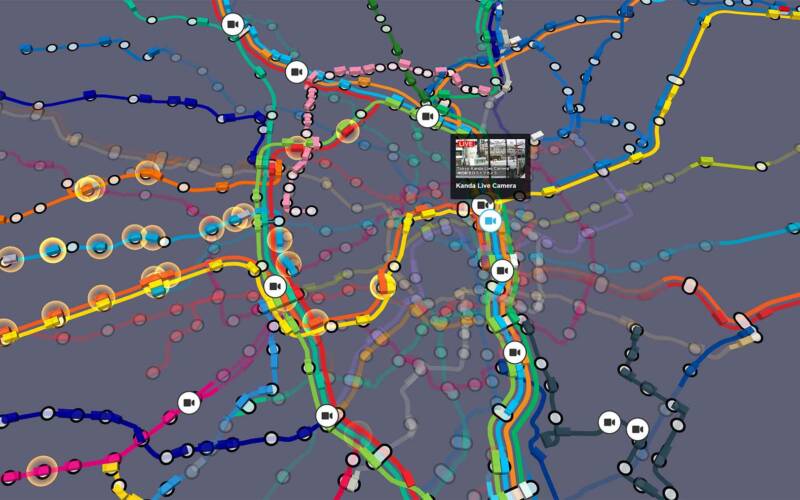


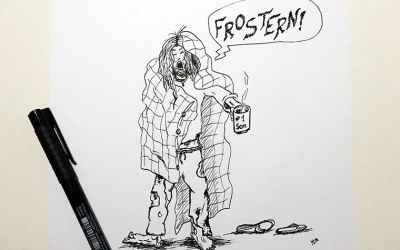
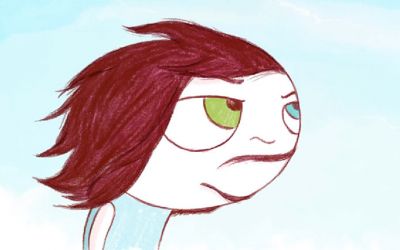
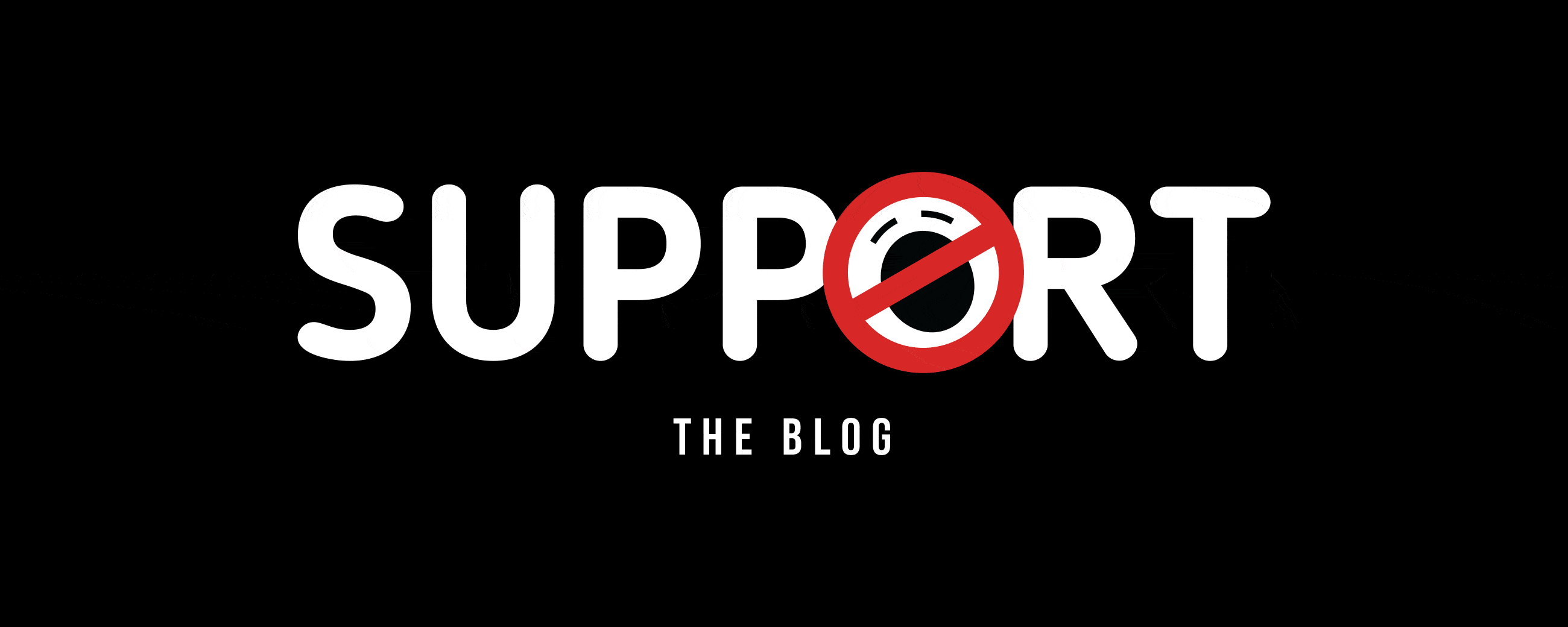






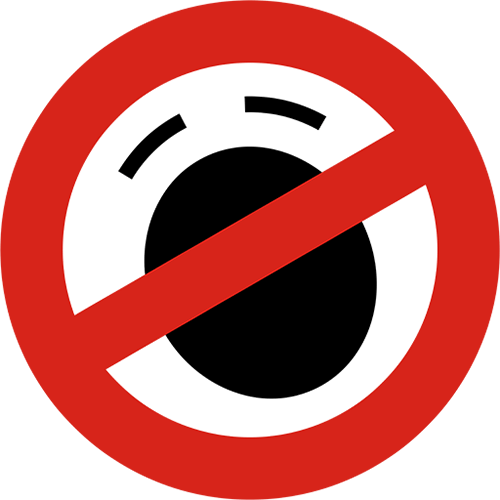
Pingback: krims.krams (264) – Happy-New-Year-Ausgabe – MonsŦropolis
Pingback: Die besten optischen Illusionen des Jahres 2023 - Genau hingeschaut